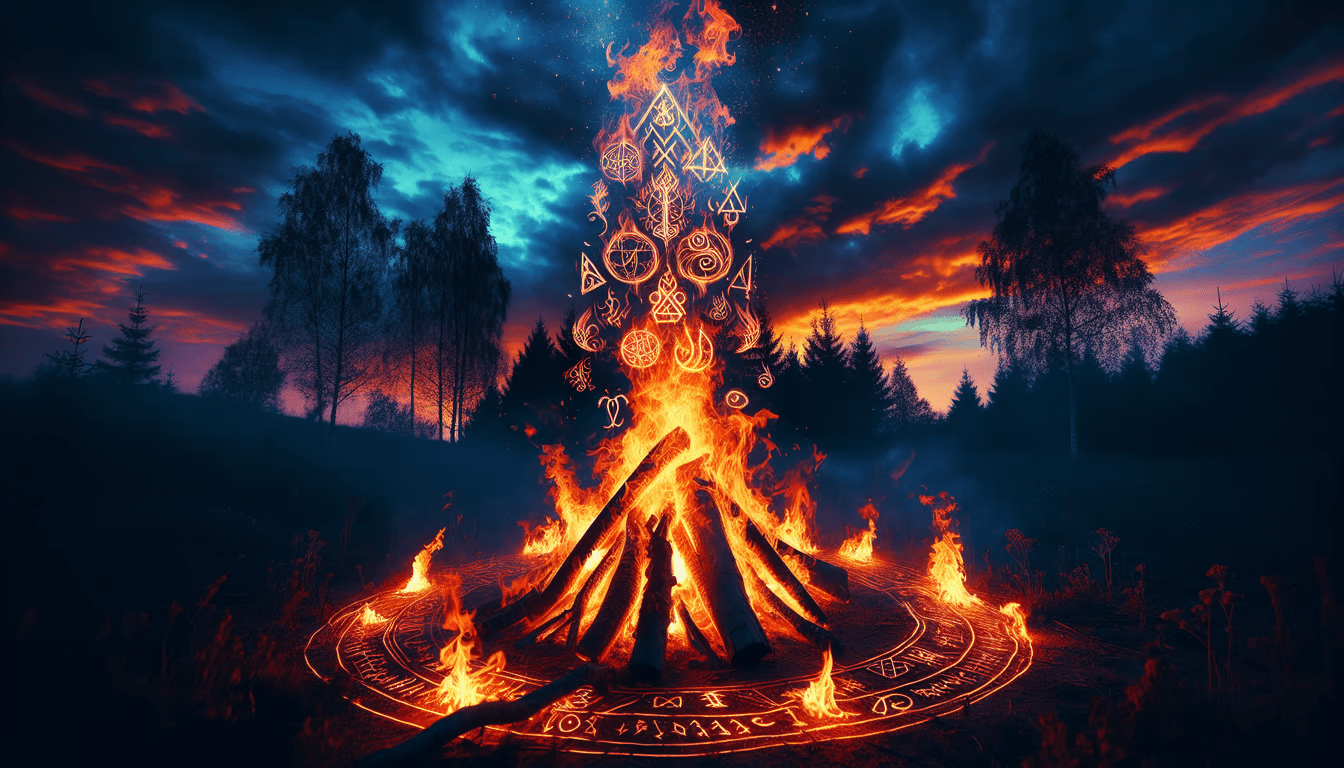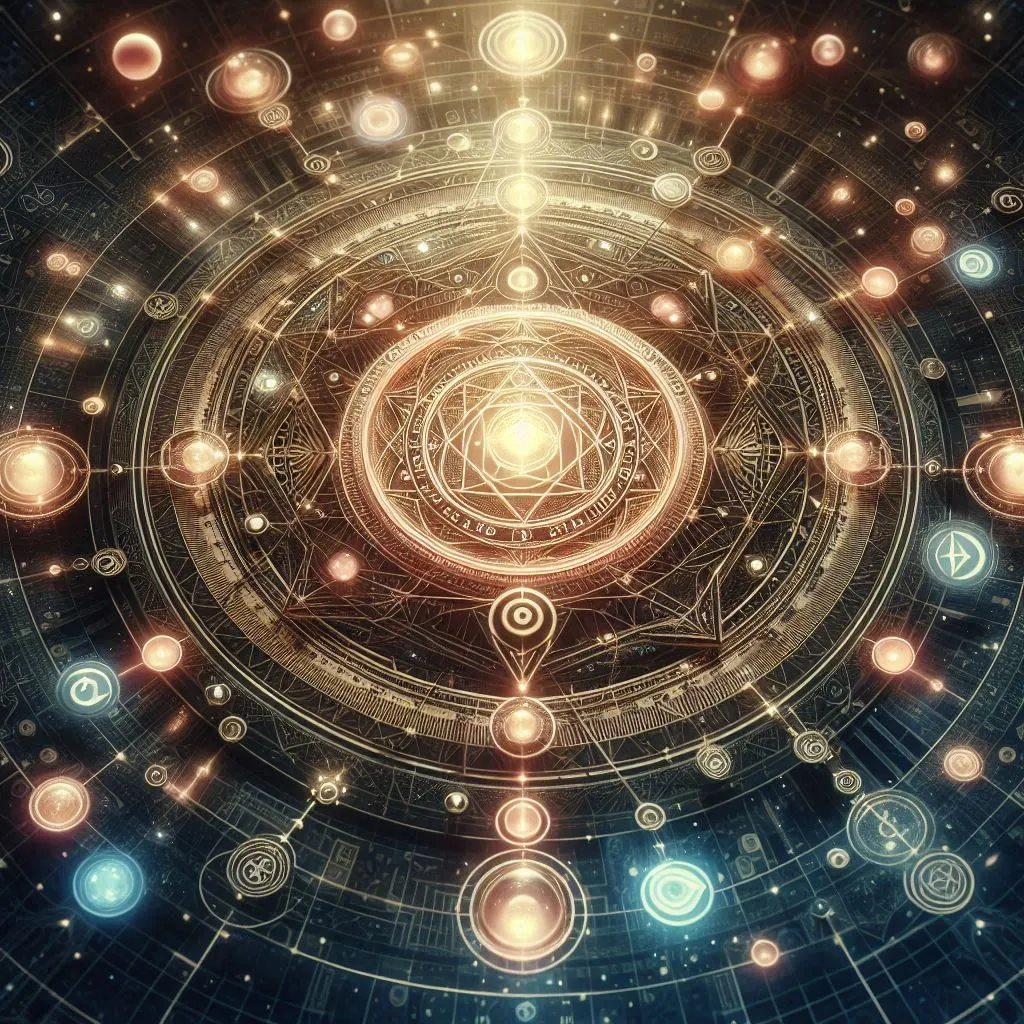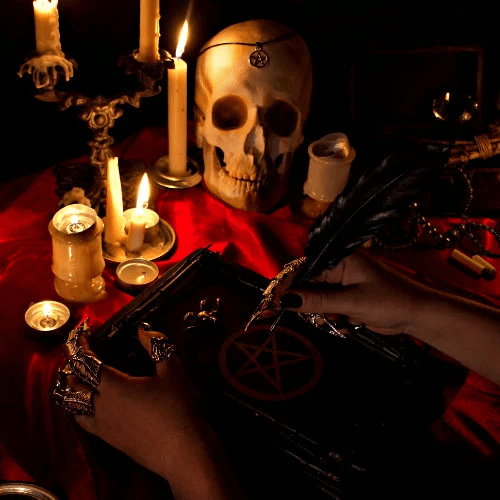Your cart is currently empty!

The History and Use of Pyromancy: An Ancient Art of Divination
For centuries, humans have sought to understand the mysteries of the universe, divine their futures, and make sense of the world around them. One of the most fascinating methods employed in this pursuit is pyromancy, the art of divination through fire. Rooted in ancient traditions and practices, pyromancy holds a unique place in the tapestry of mystical arts, blending natural elements with human curiosity and imagination.
In this blog post, we will delve into the history of pyromancy, explore its cultural significance, and examine how it has been practiced across various civilizations. We’ll also consider how the practice has evolved and its place in modern spiritualism, supplemented with examples of how pyromancy has been used to guide decision-making and understand the unknown.
What Is Pyromancy?
Pyromancy derives its name from the Greek words “pyr” (fire) and “manteia” (divination). It is the practice of interpreting flames, smoke, and other fire-related phenomena to uncover hidden truths, predict the future, or gain insights into pressing questions. Pyromancy has been classified as a form of elemental divination, given its reliance on fire, one of the classical elements.
At its core, pyromancy involves observing the behavior of fire in a controlled setting—such as a ceremonial bonfire, a hearth, or a candle flame—and interpreting its movements, colors, and patterns. Practitioners often supplement their interpretations with rituals, prayers, or chants to guide the energy of the fire and establish a connection with higher powers or spirits.
Historical Roots of Pyromancy
Ancient Civilizations and Fire Worship
The origins of pyromancy are intertwined with humanity’s earliest interactions with fire. As one of the first tools mastered by humankind, fire held immense symbolic power. It represented transformation, destruction, purification, and renewal, making it a natural focal point for spiritual and mystical practices.
- Mesopotamia: The ancient Mesopotamians, known for their advancements in astrology and divination, often used fire in their rituals. Priests interpreted the movement of flames during sacrificial ceremonies to divine the will of the gods.
- Ancient Greece: Pyromancy flourished in ancient Greece, where it was associated with the worship of Hephaestus (god of fire) and Hestia (goddess of the hearth). Greek oracles and seers, such as the Pythia at Delphi, sometimes employed fire as a medium to communicate with the divine.
- China: In ancient China, pyromancy was closely linked to Taoist rituals. Fire was used to symbolize the interplay of yin and yang, and practitioners analyzed the smoke and ash from burning incense or oracle bones to uncover messages from the spiritual realm.
- Indigenous Cultures: Many indigenous cultures, including Native American and African tribes, incorporated fire rituals into their spiritual practices. For example, the Lakota Sioux used fire in their sacred sweat lodge ceremonies to seek visions and guidance.
Pyromancy in the Middle Ages
During the Middle Ages, pyromancy gained prominence in European occult traditions. The practice was often linked to alchemy, as fire was seen as a transformative force capable of turning base metals into gold. Alchemists believed that studying the behavior of flames could reveal universal truths and unlock hidden knowledge.
However, pyromancy also faced scrutiny during this time, as the rise of Christianity led to the suppression of pagan practices. Church authorities often labeled pyromancers as heretics or witches, associating their art with sorcery and demonic influences. Despite these challenges, pyromancy persisted in secret, practiced by mystics, magicians, and those seeking answers beyond the dogma of the Church.
Techniques and Methods of Pyromancy
Pyromancy encompasses a variety of techniques, each with its unique focus and symbolism. Below are some of the most notable methods:
- Flame Observation:
- Practitioners study the size, color, and movement of flames. For example:
- A steady, bright flame might indicate success or clarity.
- A flickering or uneven flame could suggest turbulence or obstacles.
- A flame that suddenly extinguishes might be seen as a warning of danger.
- Practitioners study the size, color, and movement of flames. For example:
- Smoke Interpretation:
- Observing the direction, density, and shape of smoke is another common technique.
- Smoke rising straight upward is often considered a positive omen, symbolizing a direct connection with the divine.
- Spiraling or dispersing smoke might suggest confusion or uncertainty.
- Observing the direction, density, and shape of smoke is another common technique.
- Ash Patterns:
- The residue left behind by burnt materials, such as paper or herbs, is analyzed for symbols or messages.
- Fire Scrying:
- This involves gazing into the flames, similar to crystal ball gazing, to receive visions or impressions.
- Combustion Experiments:
- In some traditions, practitioners would burn specific items (e.g., dried herbs, bones, or animal fats) and interpret the way they burned to answer specific questions.
Symbolism to Look For in the Fire
Interpreting the behavior of fire in pyromancy involves a keen eye for symbolism and an intuitive connection to the element. Flames, smoke, and even the sounds of the fire can reveal patterns and images that practitioners use to uncover messages from the spiritual realm. Here are some key symbols to look for during a pyromantic session, along with their common interpretations:
1. Flame Shapes and Movements
The way flames rise, flicker, and dance often conveys symbolic meaning. Observing their behavior is one of the primary techniques of pyromancy.
- Spiraling Flames: If the flames form spirals or circular movements, it may symbolize cycles, renewal, or a repeating pattern in your life. It could also indicate the presence of spiritual energy or communication.
- Split Flame: A single flame that splits into two might symbolize a division or conflict, such as an upcoming choice, separation, or opposing forces at play.
- Leaping Flame: Flames that leap high or move energetically suggest passion, success, or enthusiasm. This could be a positive sign of growth and opportunity.
- Weak or Wavering Flame: A small or flickering flame may indicate uncertainty, hesitation, or instability in your current path. It may be a prompt to reassess your plans.
2. Colors of the Flame
The color of the fire can provide significant insight, as each hue is associated with particular energies or emotions:
- Bright Yellow or Orange: These are considered positive colors, symbolizing warmth, vitality, and clarity. They may indicate optimism and success.
- Blue Flames: A blue flame often suggests spiritual presence, protection, or higher wisdom. It can signify the guidance of a divine or otherworldly force.
- Red Flames: Red is a symbol of intense energy, passion, or anger. It might represent love, ambition, or even danger, depending on the context of your question.
- Green Flames: Rare but meaningful, green flames are associated with growth, prosperity, and healing. They might symbolize financial or physical well-being.
- Dark or Blackened Flames: Flames that burn dark or emit heavy smoke could symbolize negativity, challenges, or unresolved fears.
3. Smoke Patterns
The smoke rising from the fire can also hold powerful symbolism. Practitioners often interpret the shapes or movements of the smoke as messages or omens.
- Straight-Upward Smoke: Smoke that rises cleanly and vertically is considered a good omen, representing clarity, focus, and a direct connection with the divine.
- Drifting Smoke: Smoke that meanders or twists unpredictably might symbolize confusion or indecision. It could also indicate hidden forces at work.
- Animal or Human Shapes: Seeing recognizable shapes in the smoke, such as animals or people, often carries specific symbolic meanings:
- Bird Shapes: Freedom, messages, or journeys.
- Snake Shapes: Transformation, healing, or hidden threats.
- Human Faces: Guidance from ancestors or spirits.
- Dispersing Smoke: Smoke that quickly dissipates may suggest fleeting opportunities or the need to act swiftly.
4. Sounds of the Fire
The crackles, pops, and hisses of a fire are not just noise; they can carry symbolic messages as well.
- Steady Crackling: A consistent and rhythmic crackle suggests harmony and balance. It may indicate steady progress toward your goals.
- Loud Popping: Sudden, loud pops can represent surprises, disruptions, or revelations. These may be positive or negative, depending on the broader context.
- Hissing Sounds: A hissing or sputtering sound might indicate resistance, suppressed emotions, or unseen obstacles.
5. Patterns in Ashes and Residue
After the fire burns out, the remaining ash and charred material may leave behind meaningful patterns.
- Swirling Ash: Circular patterns in ash may symbolize cycles, unity, or the completion of a phase.
- Lines or Paths: Straight lines might suggest clarity or direction, while winding paths indicate a journey filled with twists and turns.
- Shapes in the Ash: Just like with smoke, shapes in the ash (e.g., animals, symbols, or letters) can carry unique meanings.
6. Symbolic Numbers in Flames
If the flames naturally divide into distinct sections or appear in numbers, the quantity itself may hold significance:
- One Flame: Unity, independence, or a singular focus.
- Two Flames: Duality, balance, or a partnership.
- Three Flames: Creativity, growth, or spiritual alignment (often linked to the “holy trinity” in various traditions).
- Four Flames: Stability, structure, or grounding (reflecting the four classical elements: earth, air, fire, and water).
7. Fire’s Interaction with Burned Objects
If specific objects are burned during a ritual—such as paper, herbs, or bones—the way they combust can offer additional layers of symbolism.
- Quick Burning: Materials that ignite and burn quickly often symbolize swift resolutions or a clear path forward.
- Smoldering or Incomplete Burning: If something fails to burn fully, it might suggest unresolved issues, delays, or the need for further effort.
- Cracks or Breaks in Objects: The way materials break apart in the fire can symbolize ruptures, transformation, or release.
How to Interpret Fire Symbolism
Interpreting fire’s symbolism in pyromancy requires intuition and an open mind. While traditional meanings provide a helpful framework, practitioners are encouraged to trust their personal interpretations, as fire often communicates in ways tailored to the individual. Keeping a journal to record your observations and reflections can also deepen your understanding of fire’s messages over time.
Whether you’re seeking guidance, clarity, or connection with the spiritual realm, the symbols within the flames can illuminate your path—if you’re willing to look closely and listen to the fire’s voice.
Cultural Significance of Pyromancy
Pyromancy has been deeply rooted in various cultures, often serving as a bridge between the mundane and the spiritual. Here are a few examples of how it has played a role in different societies:
- Roman Augury:
- The Romans practiced a form of pyromancy called ignispicium, where they interpreted the flames of sacrificial offerings. This was often used to seek guidance on matters of state, such as war or political decisions.
- Zoroastrianism:
- In Zoroastrianism, fire is a sacred element symbolizing purity and truth. While not explicitly used for divination, fire temples served as places for spiritual insight and communion with Ahura Mazda, the supreme god.
- Hindu Agnihotra:
- Agnihotra is a Vedic fire ritual performed to purify the environment and create harmony. Though primarily a form of worship, the behavior of the fire during the ritual is sometimes interpreted as a sign of divine favor or disfavor.
- Medieval Europe:
- In European folklore, fire was often associated with protection and prophecy. Bonfires lit on festivals like Beltane and Samhain were believed to ward off evil spirits and provide glimpses into the future.
Examples of Pyromancy in Practice
The Oracle of Delphi
One of the most famous examples of fire-based divination comes from ancient Greece. The Pythia, the high priestess of the Oracle of Delphi, often used fire as a medium to convey messages from Apollo. The flickering flames in the temple hearth were said to help the Pythia enter a trance state, during which she provided cryptic prophecies.
Joan of Arc’s Visions
While not explicitly pyromancy, Joan of Arc’s divine visions often involved flames, both metaphorically and literally. During her trial, she described visions of St. Michael accompanied by bright, burning light, which she interpreted as a sign of her divine mission.
Modern Fire Scrying
Today, pyromancy has found a resurgence among modern spiritualists and practitioners of neo-paganism. Fire scrying is a popular technique during rituals and meditations, often performed with candles or outdoor bonfires. For instance, a practitioner might light a candle while focusing on a question, then interpret the way the flame moves or the shapes formed in the wax drippings.
The Symbolism of Fire in Pyromancy
Fire holds a wealth of symbolic meaning that enhances its role in divination:
- Transformation: Fire transforms everything it touches, making it a symbol of change, renewal, and evolution.
- Destruction and Creation: Fire’s dual nature represents both the destruction of the old and the creation of the new.
- Illumination: As a source of light, fire symbolizes enlightenment, truth, and clarity.
- Passion: Fire’s intensity is often linked to emotions, energy, and vitality.
These attributes make fire a fitting medium for exploring life’s uncertainties and uncovering hidden truths.
Criticism and Skepticism
As with many forms of divination, pyromancy has its share of critics. Skeptics argue that the practice relies heavily on subjective interpretation and confirmation bias, making it more a reflection of the practitioner’s mind than a genuine source of knowledge. Scientific explanations for fire’s behavior—such as variations in air currents, fuel quality, and temperature—further undermine its mystical claims.
Nevertheless, proponents of pyromancy view it as a tool for introspection and spiritual connection rather than a precise science. For many, the act of engaging with fire in a sacred context provides comfort, clarity, and a sense of purpose.
Conclusion
Pyromancy, an ancient and enduring form of divination, offers a fascinating glimpse into humanity’s relationship with fire and the quest for meaning. From the temple flames of ancient Greece to modern-day candle scrying, the practice continues to captivate and inspire those drawn to its mystical allure. Whether regarded as a spiritual art or a symbolic exercise, pyromancy remains a powerful testament to fire’s timeless role in the human story.
By embracing the dance of the flames and the whispers of the smoke, practitioners of pyromancy step into a world where the material meets the ethereal—a world where the answers we seek just might flicker within the fire.






